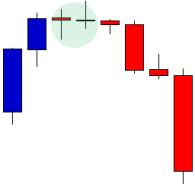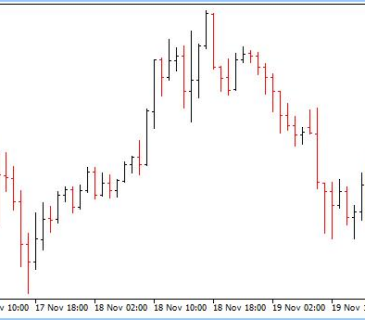Compounding ancillary factors such as variations in inlet flow conditions, the Newtonian fluid assumption and physical aneurysm orientation can plausibly influence resulting haemodynamic forces, though future work is needed to expand the specific relationships. Moreover, these factors, some of which could be time or spatially varying, hinder the robustness of both WSS and RRT and their ability to inform aneurysm stability. For example, the assessed stability of the basilar tip aneurysm here would likely be different based on the WSS distribution obtained from the full resolution CFD versus that obtained from the full resolution STB. AB – This paper compares numerical predictions of turbulence intensity with in vivo measurement.
2) Inhaled 129Xe will take longer to displace the air that was initially inside the airway due to the low velocities in the boundary layer. 3) The slow-moving flow in the boundary layer will also remain in the airway for longer. Hyperpolarized 129Xe MR signal decays according to radiofrequency pulse excitation and the longitudinal relaxation time , and thus, the longer the 129Xe remains in the airway, the more signal decay it will be subjected to. To eliminate this potential source of error, the boundary layer was removed by eroding the mask by 1 voxel at the boundary and the agreement between the two methods was re-evaluated. A further possible cause for differences in PC MRI- and CFD-derived velocity maps reported in this in vivo study compared to previous studies is upper airway motion.
However, the calibration errors were consistent with those observed in well-controlled TOMO-PIV experiments. To further ensure the accuracy of the STB data, a portion of data was processed using the traditional TOMO-PIV multiplicative algebraic reconstruction technique processing . Due to the complex, highly curved aneurysm geometries which amplify small and unavoidable refractive index mismatches within the test section, ghost particles were expected to be higher using MART. When compared with MART, STB’s use of temporal information reduced the percentage of estimated ghost particles from about 10% to less than 1%. The effect of voxel averaging and spatial resolution on haemodynamic metric magnitudes has also been a growing concern. Roloff et al. demonstrated reductions in velocity magnitude by as much as 10–20% because of voxel averaging.

Correlation between the two techniques in the airways may differ from that in previously reported vascular studies for several reasons. Respiratory PC MRI involves inhalation of exogeneous 129Xe gas as a contrast agent whilst in hemodynamics endogenous blood is imaged directly. In fact, in some cardiovascular studies, PC MRI velocity values are used to define the CFD inlet boundary condition , thus leading to better agreement in the upstream flow rates.
Fig 4 shows the first 5 dynamic images of a 10-image dynamic time-series PC MRI dataset acquired from subject 1, depicting all three components of velocity, in addition to its magnitude. In general, velocity in the foot-to-head direction, vFH, showed the highest velocity values, which is expected as the direction of airflow is largely aligned with the main axis of the airway. Velocity in the anterior-to-posterior direction, vAP, showed moderate-high velocity regions malahov andrei in the nasopharynx and in regions where the airway turns significantly. The velocity field produced by CFD simulations has a much finer spatio-temporal resolution than that derived from PC MRI (~0.1 mm3, 0.05 ms vs ~1 mm2 in-plane, ~10 mm through-plane, ~3–5 s). Therefore, velocity from all CFD cells that correspond to the volume of each MRI voxel are spatially averaged to produce the mean value for a cell of identical spatial resolution to the PC MRI data.
Physics > Fluid Dynamics
We compare wall shear stress , oscillatory shear index , and relative residence time across each modality. The results demonstrated that OSI, a non-dimensional parameter, was the most robust and consistent across modalities and spatiotemporal resolution. We have proposed two methods to improve the robustness of our comparisons between PC MRI and CFD; removal of the outer boundary layer of the PC MRI and CFD maps, and spatial down-sampling of PC MRI and CFD data. At the boundary, the discrepancy between PC MRI and CFD is large, and may be explained by the low velocities of gas at the wall. Fluid near a wall moves much more slowly than fluid in the center of the conduit; this slow-moving region is often termed the “boundary layer”.
- In addition, a different radiofrequency coil was used for MR signal detection due to the different nuclei and since these coils were incompatible, the subject may have changed position during the coil switching process.
- The effect of voxel averaging and spatial resolution on haemodynamic metric magnitudes has also been a growing concern.
- The thrombus predicted by CFD was observed on the wall surface of the housing in the inflow and outflow parts.
- The concept of dynamic similarity implies that the flow patterns recorded with 129Xe will be equivalent to air flowing at a different flow rate.
Figure 4 Mass fraction of the particle size distribution produced by the Novolizer DPI and Respimat SMI inhalers. Values for the Respimat PSD were reported in the study of Steed et al. , whereas new values for the Novolizer at a constant flow rate of 80 LPM were measured in this study. MRI-based measurements of aerosol deposition in the lung of healthy and elastase-treated rats. Reproducibility of haemodynamical simulations in a subject-specific stented aneurysm model–a report on the Virtual Intracranial Stenting Challenge 2007. Figure 7 Regional deposition fraction predictions for the Novolizer in B4-B7 and B8-B15 implementing the more accurate polydisperse simulation vs. the monodisperse approximation. Implementing the correction factor of 1.25×MMAD cannot fully account for deposition of the polydisperse aerosol in these two different lung regions.
Similar articles
CFD simulations of shear stress through 7-µm slits at a flow rate of 1.5 µL/min in each channel. The bioreactor generates uniform shear profiles across all slits, within and above the physiological shear stress range (1 – 4 dynes/cm2 in marrow sinusoids). Bioreactor is positioned over a microscope equipped with real-time imaging and green fluorescence. investment real estate finance and asset management Upon Mk loading and shear exposure, Mks generate proPLTs through the slits that then get fragmented by the secondary shear flow (image at 20X, scale bar 50 μm). Spatial comparison of 3×3 down-sampled foot-head velocity data from PC MRI and CFD, difference maps, and corresponding histograms of velocity values, for a) subject 2 and b) subject 3.
Computational fluid dynamics methods can be used to compute the velocity field in patient-specific vascular geometries for pulsatile physiological flow. The effect of the inlet flow rate conditions on calculated velocity fields was investigated. We assessed the internal consistency of our approach by comparing CFD predictions of the in-plane velocity field to the corresponding in vivo MR velocimetry measurements. Patient-specific surface models of four basilar artery aneurysms were constructed from contrast-enhanced MR angiography data.

Comparing the correlations found between 129Xe PC MRI and CFD velocity maps in the airways with previous studies in vascular hemodynamics reveals a similar level of agreement. For example, the r values reported in this study are within the range reported by Isoda et al. Discrepancies between the two methodologies were similar to those reported in this study; e.g. that PC MRI did not reveal recirculation regions that were calculated by CFD [58–60].
The full resolution CFD WSS distribution maintained a larger spread of WSS values than all other modalities and maintained the largest WSS magnitudes. Similar OSI distributions for the basilar legacyfx broker review tip aneurysm were observed for all modalities except the full resolution CFD. The average OSI of the STB changed from 0.17 to 0.08, while CFD went from 0.04 to 0.07 when voxel averaged.
Airen Health Solutions
A positive-space model of the vascular geometry was 3D printed (ProJet printer—3D Systems), embedded into a tear-resistant silicone block and then cut from the block. The metal model was embedded in optically clear polydimethylsiloxane silicone (PDMS—Slygard 184) which was allowed to cure until hardened, then the metal was melted out from the clear PDMS. Figure 9 Comparison of in vivo and CFD predictions of DF in different regions of the airways for the Respimat inhaler with a fenoterol formulation considering one SIP geometry in each lung lobe.
Generic drug developers may then use this IVIVC to interpret in vitro results in a manner that may increase confidence in their products prior to in vivo testing. CFD simulations of respiratory airflow are widely used to quantify and visualize the function of the human airways. This study is the first assessment of the similarity between maps of respiratory airflow velocity calculated by CFD simulations and 129Xe PC MRI obtained in vivo in humans. Given the flow-field variations across modalities, it is important to investigate and compare the normalized spatial distributions of the haemodynamic metrics.

For reference, we note that it is common practice to use an in-plane resolution ~3–4 mm and slice thickness of 10–15 mm for 129Xe MR imaging of lung ventilation. A time-series of up to 10 images of each slice was acquired; depending on scan parameters, the acquisition time for a single slice with three-directional velocity encoding ranged from 3–5 seconds. Fig 2 shows example 1H anatomical MRI images, along with representative dynamic 129Xe gas PC MR images, in each of the three subjects. The inlet flow rate was computed from the velocity fields for all modalities in the basilar tip and ICA aneurysms to ensure agreement across modalities and is shown in figure 3a,b, respectively.
CFD Antibody
In general, each modality yields a unique set of strengths and weaknesses as well as varying accuracy, physiological fidelity and resolution. The results here demonstrated that WSS, OSI and RRT maintained differing behaviour when subjected to these flow domain variations across modalities. This study is the first in vivo human comparison of CFD simulations of respiratory airflow and establishes a method for future validation of CFD simulation results by comparison to PC MRI velocity maps. Qualitative agreement between the two techniques was good, with high and low velocity regions and features such as high flow jets occurring in the same spatial locations. This study lays the groundwork for future validation studies in healthy subjects and in patients with airway disease. Such future validation studies based on the techniques demonstrated here will aid the clinical adoption of CFD simulations as a means to assess airway disease and treatment strategies.
Since 129Xe is not normally inhaled, it is useful to determine what sort of breathing maneuver the 129Xe inhalation would represent in air. The concept of dynamic similarity implies that the flow patterns recorded with 129Xe will be equivalent to air flowing at a different flow rate. This equivalent flow rate, QAir, can be calculated by equating the Reynolds numbers of the xenon flow, ReXe, and the equivalent airflow, ReAir. Many airway diseases result in obstruction of the large airways, including obstructive sleep apnea , medialized vocal folds, tracheomalacia, laryngomalacia, bronchomalacia, and subglottic stenosis [1–3]. These diseases often result in multiple sites of obstruction, and/or may occur with comorbid lung abnormalities. Currently, there are no clinical methods to assess the contribution of each site of obstruction to respiratory symptoms.
We are using this bioreactor to study the proPLT formation process and enhance in vitro PLP yields. Experimental studies were conducted to validate the simulations in terms of streamline profiles and flow patterns with and without cell capture. Microenvironment characteristics include but are not limited to extracellular matrix protein coatings. Furthermore, the design of the bioreactor allows for a wide physiological shear rate range.
Materials and methods
The average RRT error caused by voxel averaging was 0.79 (dynes cm−2)−1, a 125% error when normalizing by the mean RRT across all datasets. However, the average OSI bias error caused by voxel averaging was 0.04, a 50% error when normalized by the mean OSI across all datasets. Furthermore, in figure 8, comparing the in vitro and in silico datasets to the in vivo 4D flow, OSI had the most consistent 95% CI bounds across all modalities as well as across full resolution and VA datasets within the same modality.

